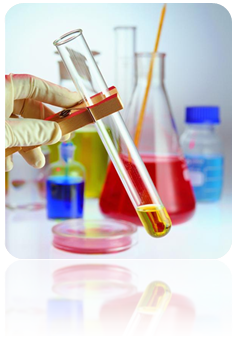Summary of Certification Content
PAHs, scientific name polycyclic aromatic hydrocarbons. It is a type of harmful substance produced by incomplete combustion or high-temperature treatment of fuels such as petroleum and coal, as well as wood and combustible gases. It usually exists in petrochemical products, rubber, plastics, lubricants, rust preventive oils, incomplete combustion organic compounds, and is one of the important carcinogens in the environment.
The European Parliament and the European Commission signed the 2005/69/EC Directive in Strasbourg, France, on November 16, 2005 and issued it on December 9 of the same year. This directive mainly provides instructions for polycyclic aromatic hydrocarbons (PAHs) in tires and added oil.
On April 1, 2008, the official resolution ZEK 01-08 of the German Safety Technology Certification Center ZLS (GS authorized agency) stated that GS logo certification will be mandatory to include the requirements of PAHs, and products that do not meet the requirements of PAHs will not be able to obtain GS certificates. All GS issuing agencies must implement this resolution.

Control of PAHS materials for different purposes: (Unit: PPM)
limit | 1class | 2class | 3class |
|
Food, put in mouth Medium material, 36 pieces Toys for children under the age of one month
|
Materials that have long-term contact with the skin for more than 30 seconds, Class 1 Toys other than those specified
| Materials and other materials that do not come into frequent contact with the skin for more than 30 seconds |
BaP? mg/kg | not detectable
<0.2 | 1 | 20 |
PAH total
mg/kg(16 term) | not detectable
<0.2 | 10 | 200 |
In the environment, organic pollutants are ubiquitous, with polycyclic aromatic compounds (PAH) being the bulk, and some have been proven to have carcinogenic and mutagenic effects on the human body. The sources of PAH include: biosynthesis of algae or bacteria, forest fires, volcanic eruptions, as well as exhaust from thermal power plants, garbage incineration sites, locomotives, and factories. There are many types of PAH, among which 16 compounds were listed by the US Environmental Protection Agency (EPA) in 1979.
PAHs mainly include the following 16 similar substances:
1 Naphthalene
2 Acenaphthylene
3 Acenaphthene
4 Fluorene
5 Phenanthrene
6 Anthracene
7 Fluoranthene
8 Pyrene
9 Benzo(a)anthracene
10 Chrysene
11 Benzo(b)fluoranthene
12 Benzo(k)fluoranthene
13 Benzo(a)pyrene
14 Indeno(1,2,3-cd)pyrene
15 Dibenzo(a,h)anthracene
16 Benzo(g,hi)perylene( ghi )
Character: Pure PAH is usually a colorless, white, or light yellow green solid.